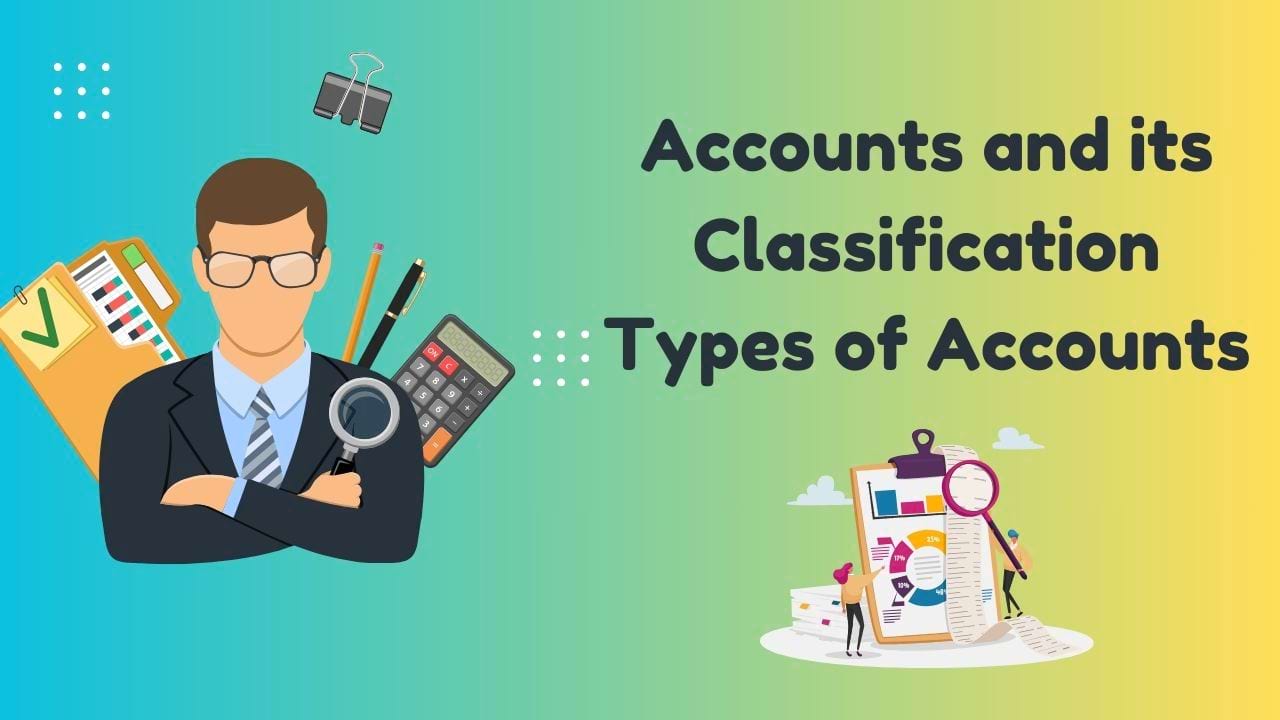Accounts and its Classification (Accounts Classification): The business transactions are recorded in accounts. An account is an individual record of a person, firm, or thing, an item of income, or an expense. An account is prepared for each type of asset, liability, owner(s) equity, revenue, and expense. For example, the account of cash would show the cash receipts, cash payments, and balance of cash in hand, and an account of a person would show the business transactions that have taken place with that person and net position in respect of money owed by or to him. You may also like Bills of Exchange.
Quick Links
Accounts Classification
According to Kohler’s Dictionary for Accountants, an account has been defined as a formal record of a particular type of transaction expressed in money.
(I) PERSONAL ACCOUNTS:
These accounts show the transactions with customers, suppliers, money lenders, banks, and the owner. Personal accounts can take the following forms:
(a) Natural Personal Accounts: The term natural persons means persons who are the creation of God. For example proprietor’s account or the account of say, Naresh a customer or supplier.
(b) Artificial Personal Accounts: These accounts include accounts of corporate bodies or institutions that are recognized as persons in business dealings. For example, any limited company’s account, bank account, insurance company’s account, any firm’s account, any club’s account, etc.
(c) Representative Personal Accounts: These are accounts that represent a certain person or group of persons. In books, the names of the parties will appear. Since these accounts are many but are of the same nature, they are added and put under a common title. For example, salary is outstanding towards 15 employees, the amount may be shown against one name ‘Salary Outstanding’ representing all 15 employees. Interest outstanding, and rent receivable are other such examples. Must Read Features of the Ledger Account.
In simple language
- (a) These persons could be natural persons like Suresh’s A/c, Anil’s A/c, Rani’s A/c, etc.
- (b) The persons could also be artificial persons like companies, bodies corporate or association of persons or partnerships, etc. Accordingly, we could have Videocon Industries A/c, Infosys Technologies A/c, Charitable Trust A/c, Ali and Sons trading A/c, ABC Bank A/c, etc.
- (c) There could be representative personal accounts as well. Although the individual identity of persons related to these is known, the convention is to reflect them as collective accounts. e.g. when salary is payable to employees, we know how much is payable to each of them, but collectively the account is called ‘Salary Payable A/c’. Similar examples are rent payable, Insurance prepaid, commission pre-received, etc. The students should be careful to have clarity on this type and the chances of error are more here.
(II) REAL ACCOUNTS:
Real accounts may be of the following types:
(a) Tangible Real Accounts: These are accounts of such things as are tangible i.e. can be seen, touched, or felt physically. Examples– land, buildings, furniture, cash, etc. (Note: Please note that a bank account is a personal account and is not a real account because a bank account is the account of some banking company that is an artificial person).Assets that have physical existence and can be seen, and touched. e.g. Machinery A/c, Stock A/c, Cash A/c, Vehicle A/c, and the like.
(b) Intangible Real Accounts: These accounts represent such things as cannot be touched but can be measured in terms of money. Examples are goodwill, trademarks, patent rights, etc. These represent possession of properties that have no physical existence but can be measured in terms of money and have a value attached to them. e.g. Goodwill A/c, Trade mark A/c, Patents and Copy Rights A/c, Intellectual Property Rights A/c and the like. You may also like Users of Accounting Information.
(III) NOMINAL ACCOUNTS:
These accounts are related to expenses or losses and incomes or gains e.g. Salary and Wages A/c, Rent of Rates A/c, Travelling Expenses A/c, Commission received A/c, Loss by fire A/c, etc. Nominal accounts are opened in the books to explain the expenses and incomes. For example, in a business- salary is paid to the employees, rent is paid to the landlord, wages are paid to the workers, and commission is paid to the salesmen, wherein cash goes. Examples are salary accounts, rent accounts, commission accounts, etc. Nominal accounts include accounts of all expenses, losses, income, and gains.
Valuation Accounts: In addition to the traditional classification of accounts – personal and impersonal – valuation accounts are also being recognized e.g. provision for depreciation accounts, provision for doubtful debts accounts, stock reserve accounts, etc.







